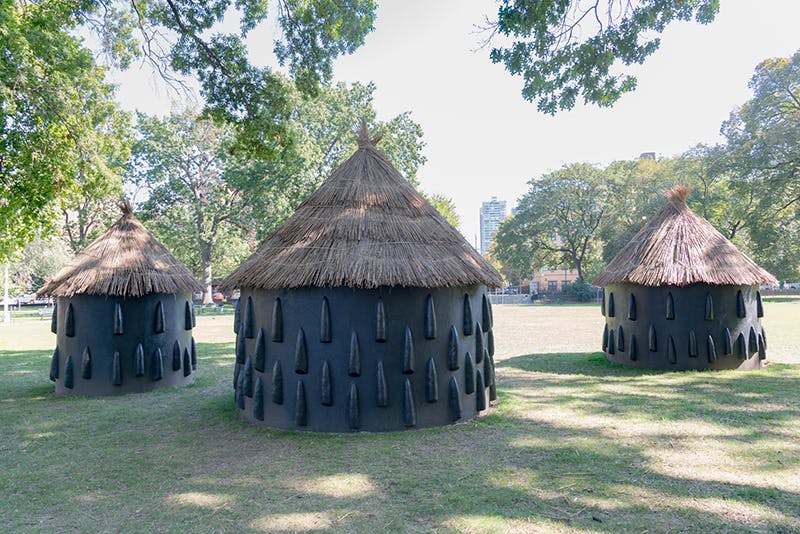inHarlem: A Look at Public Art in Harlem Then and Now

Maren Hassinger: Monuments
June 16, 2018–June 10, 2019
Marcus Garvey Park
Here, Maren Hassinger used branches to create forms that responded to aspects of the park’s landscape. The artist created the work with volunteers from the Studio Museum’s Teen Leadership Council and Expanding the Walls program—so Monuments was a project made in Harlem and for Harlem.

Maren Hassinger: Monuments
June 16, 2018–June 10, 2019
Marcus Garvey Park
Here, Maren Hassinger used branches to create forms that responded to aspects of the park’s landscape. The artist created the work with volunteers from the Studio Museum’s Teen Leadership Council and Expanding the Walls program—so Monuments was a project made in Harlem and for Harlem.
Our inHarlem series began in 2016 and has featured public art by artists Chloë Bass, Kevin Beasley, Maren Hassinger, Kori Newkirk, Thomas J Price, and Rudy Shepherd. In partnership with civic and cultural organizations in the neighborhood, inHarlem allowed us to continue our programming in Harlem and beyond.
inHarlem 2016–17
inHarlem 2017–18


Derrick Adams: Patrick Kelly, The Journey
May 3, 2017–February 23, 2018
Countee Cullen Library
These abstract collages were based on artist Derrick Adams’s extensive research into the archive of the influential African American fashion designer Patrick Kelly (1954–1990), housed at the Schomburg Center.
inHarlem 2018–2019
inHarlem 2019–20


Chloë Bass: Wayfinding
September 28, 2019–September 27, 2020
St. Nicholas Park
This monumental commission of twenty-four site-specific sculptures gestured toward the structural and visual vernacular of public wayfinding signage through a combination of text and archival images.
inHarlem 2021–22


Thomas J Price: Witness
October 2, 2021–October 1, 2022
Marcus Garvey Park
Price’s nine-foot bronze figure, The Distance Within (2021), depicted a young Black man looking down at his cell phone. Price’s large-scale sculptures are inspired by real people, often those who live and work in his hometown of South London.
Public Art Walking Tour
This feature documents the many public artworks made by artists of African American descent that can be found throughout Harlem’s streets, parks, and subway platforms.
Crossing from west to east, and north and south along the central arteries of Harlem’s heart—Malcolm X Boulevard, 125th Street, and Frederick Douglass Boulevard—we celebrate Harlem by amplifying other iconic public artworks in the neighborhood. These artworks by Black artists, whose other work is in our permanent collection, transform the landscape and are meant to disrupt or enhance the landscape they inhabit—or maybe both.





